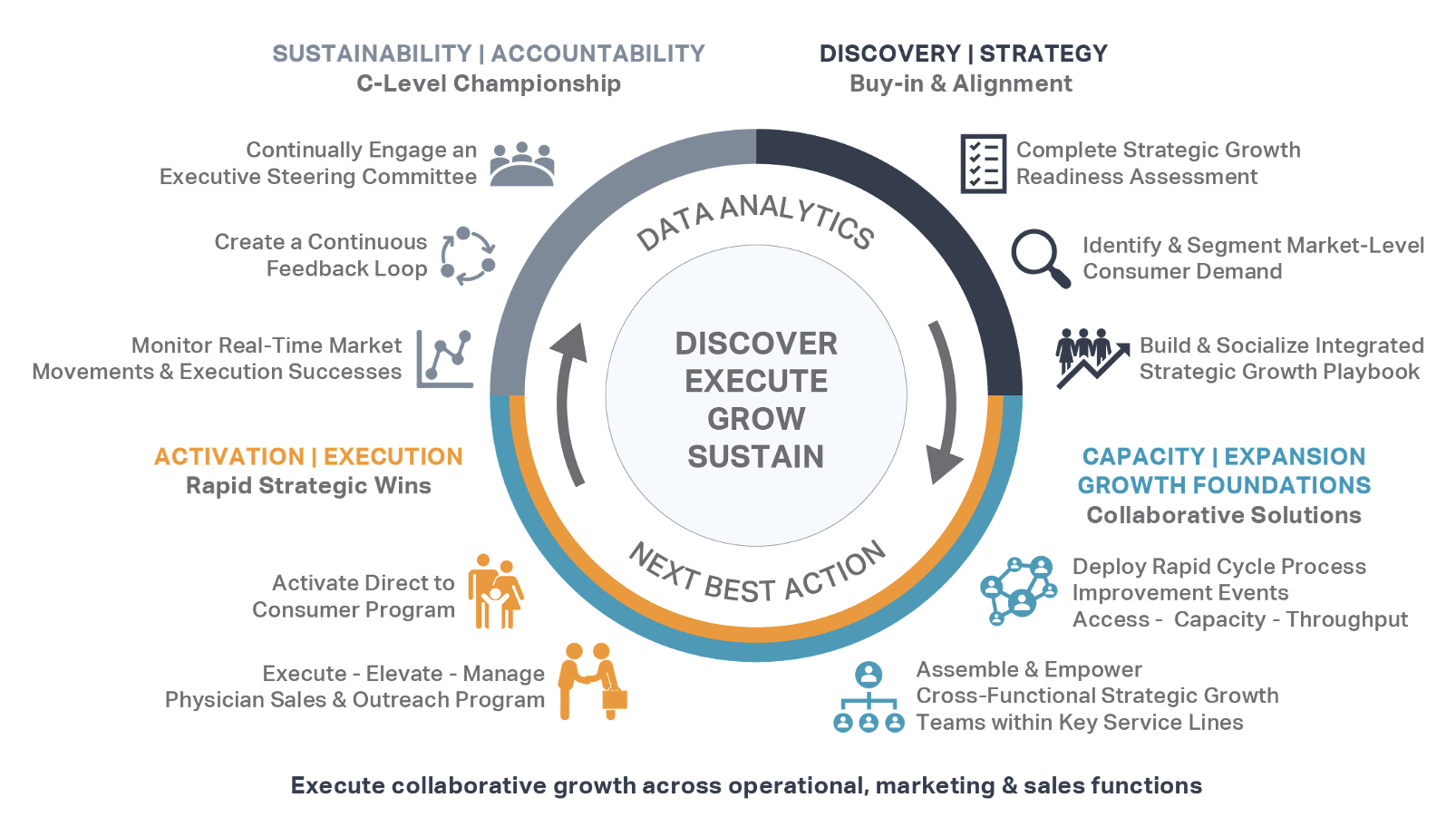STRATEGIC PLANNING & BUSINESS DEVELOPMENT
New Strategies Needed to Maximize Customer Loyalty
In health care, the constantly shifting technological landscape and stressors due to financial challenges have reinforced the importance of customer loyalty. Building and maintaining these relationships is a core responsibility of health care leaders and requires rethinking metrics and strategic approaches in order to ensure a frictionless customer experience.
During a session held at the SHSMD Conference in October, a panel of experts discussed how to efficiently and effectively engage with customers.
“Now more than ever, we need to have strategies and tactics to drive loyalty in order to keep customers sticking to us because there is so much competition in the marketplace,” says Frank Sawyer, MHA, Senior Vice President Operations, Trinity Health Oakland Hospital in Detroit.
Tammy Tiller-Hewitt, FACHE, CEO, Tiller-Hewitt HealthCare Strategies, who moderated the panel, points out that such a shift necessitates alignment and development of solid strategic planning.
“You’ve all heard great sales or marketing just exposes bad ops,” Tiller-Hewitt says. “We want to make sure that doesn’t happen.”
For Yelena Bouaziz, MBA, Principal, Consumer Innovation, Sg2, a Vizient company, maximizing customer loyalty begins with establishing an appropriate, agreed-upon definition.
“The way we think about customer loyalty is first and foremost that it’s a strategy and operating model centered around the imperative to earn the business of health care consumers,” Bouaziz notes. “This requires earning [a customer’s] business and retaining them for a lifetime by creating such a compelling value proposition that they have little to no reason to go elsewhere.”
However, creating a truly compelling value proposition that can achieve this goal is not an easy process, and often requires an organizational shift in both strategy and mindset, she says.
“We have to be able to turn to a whole new set of strategic levers, and need to look at the health care consumer as a whole person, not just a patient in need of sick care,” Bouaziz adds.
These four growth levers are driven by deep customer insight: developing a frictionless experience, engagement, trusted advisorship, and having a unique value proposition.
As an example of developing a frictionless experience, Bouaziz mentions Amazon—a company whose employees are constantly rethinking how to make it as easy and seamless as possible for customers to interact with them.
“The frictionless experience is the foundation,” Bouaziz notes. “On top of it, we start building engagement, creating an emotional bond with the patient and empowering them with useful information on an ongoing basis.”
An example here, according to Bouaziz, is Peloton, which has mastered customer engagement by providing so much ancillary content—via classes and a corresponding online community—that creates value far beyond its equipment.
Trusted advisorship focuses on establishing a mutual level of trust between patients and providers, which can be accomplished through personalized interactions and goal-based strategies.
Finally, having a unique value proposition—via providing exceptional clinical offerings—is essential for health care organizations.
Tying these levers to metrics and value propositions, as well as fully understanding the consumer experience, is essential for such work to succeed, according to Manish Mallikarjuna, Managing Director, CustomerShifts Consultancy.
“You really need to understand your patients not as passive consumers, and deeply understand the journeys that are not just within your patient base, but the consumers within your community,” he says. “Understanding this experience and creating new care models that are not driven by flavor of the month or flavor of the quarter initiatives is key.”
“I still think that when people think about customer loyalty, they are thinking about customer service,” Tiller-Hewitt adds. “It’s so much deeper and wider, and if we understand it in a different way, it could be a total game changer.”
Regarding metrics, the panel agreed that taking the time and effort to rigorously develop meaningful metrics is mission critical to achieving customer loyalty goals.
“Particularly post-pandemic, you could do all the traditional metrics right and still fail as a business,” Sawyer notes.
Succeeding today, he adds, requires engaging with a whole different set of metrics.
“When I’m talking to peers, too many of us are still looking at things, such as ‘if volume is good and encounters are good then we’re golden,’” Sawyer says. “It just doesn’t bear true anymore, particularly post-pandemic.”
Bouaziz agrees, and stresses that starting organizations on such a journey often involves a large cultural shift.
“Until an organization starts measuring the right things, it’s really hard to move the needle,” she says. “The strategic shift and operational shift pales in comparison to the cultural shift that needs to happen. While there is generally no right place to start, there definitely is a wrong place if you’re not attuned to your organization and what they are ready and able to take on.”
Properly educating stakeholders regarding changes to metrics and goals can do wonders when it comes to setting an organization up for success.
“Once we remove the barriers that are typically caused by people who have not bought in to what we’re trying to do, then we can do some really awesome things,” Tiller-Hewitt notes.
Part of this can involve understanding that separate roles within an organization can define success in varying ways (Figure).

“If you are driving any of this change, you need to connect with both empathy and economics, and you need to do fact-based analyses,” Mallikarjuna notes. People want data, he adds, but drawing the attention of the CEO may require focusing on lifetime value calculations, whereas a chief financial officer may be interested primarily in short-term margins.
Overall, defining an approach to maximize customer loyalty, and putting the plan into action, is a complex process that will occasionally seem daunting. Establishing realistic goals can help ensure success.
“If we take on too much and fail, we can create a huge barrier for the whole transformation because the organization will be so discouraged,” Bouaziz notes. “Small steps are really critical to getting on that path of success.”


